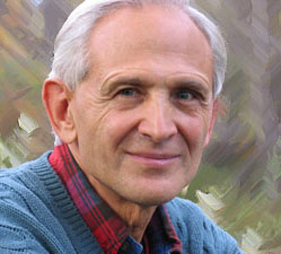“Trauma is a fact of life but it doesn’t have to be a life sentence.”
Peter Levine, PhD
Peter Levine is a contemporary psychologist specializing in trauma. He developed Somatic Experiencing therapy.
 Professional Life
Professional Life
Peter Levine received his doctorate in medical biophysics from the University of California at Berkeley and another in psychology from International University. Levine worked for NASA as a stress consultant while the Space Shuttle program was being developed and has shared his expertise while teaching at various facilities throughout the world, including pain clinics, hospitals, and treatment centers.
He is particularly interested in the effects of trauma and oppression on indigenous populations; he is a member of World Psychologists for Social Responsibility, an organization dedicated to forming effective responses to ethnic and political warfare and wide ranging disasters. Levine is the founder of Somatic Experiencing (SE), and he established the Foundation for Human Enrichment in Boulder, Colorado, to serve as a training facility for SE practitioners. Levine is a faculty member of the Santa Barbara Graduate Institute, and his 1997 book on trauma, Waking the Tiger: Healing Trauma, was a bestseller.
Contribution to Psychology
Levine developed Somatic Experiencing therapy, an approach that grew out of Levine’s observations of wild animals. He noted that animals tended to recover relatively quickly from traumatic events and that humans may benefit from adopting the trauma recovery behaviors animals use. The autonomic nervous system (ANS) is responsible for regulating automatic body functions such as heart rate, digestion, and respiration. Levine argues that the symptoms commonly associated with trauma—such as fear, flashbacks, and a heightened startle reflex—are the result of trauma-induced disruptions in the autonomic nervous system.
The goal of treatment is to enable the ANS to re-regulate itself. In their definition of trauma, practitioners include both one-time traumas and developmental traumas, such as neglect or abandonment, and focus on helping a client to gain awareness of emotions and physical reactions. In the early parts of therapy, clients are encouraged to increase their emotional and sensory awareness, progressing to awareness of physical tension in the body. Somatic Experiencing practitioners argue that trauma causes chronic tension because the body’s fight or flight system was not able to fully react to the trauma.
SE also uses a technique known is titration, which is common in other trauma treatments, such as exposure therapy. The client is progressively exposed to more and more of her trauma, usually by talking about it and processing the physical and psychological sensations it causes. As a client progresses in treatment, he or she will discuss more traumatic elements of the experience.
Through treatment, clients are encouraged to develop “resources,” which are any forms of assistance that help the ANS to self-regulate. The therapist also uses “pendulation,” which involves helping a client become unregulated and then enabling him or her to progress back to self-regulation. This approach is thought to help the client regulate the ANS independently.
References: Cross, J. (2007, Sep 13). The Healing Space: Somatic Experiencing Releases and Relieves Trauma. The Taos News. Retrieved from http://search.proquest.com/docview/435502459?accountid=1229 Peter A. Levine. (n.d.). Sounds True. Retrieved from: http://www.soundstrue.com/shop/authors/Peter_A_Levine
Peter is the author of the best selling book Waking the Tiger – Healing Trauma,(published in twenty languages) as well as four audio learning series for Sounds True, including the book CD, Healing Trauma, a Pioneering Program in Restoring the Wisdom of Our Bodies; and Sexual Healing, Transforming the Sacred Wound. He is the co-author of Trauma through a Child’s Eyes, Awakening the Ordinary Miracle of Healing. And Trauma-Proofing Your Kids, A Parents Guide for Instilling Confidence, Joy and Resilience.
